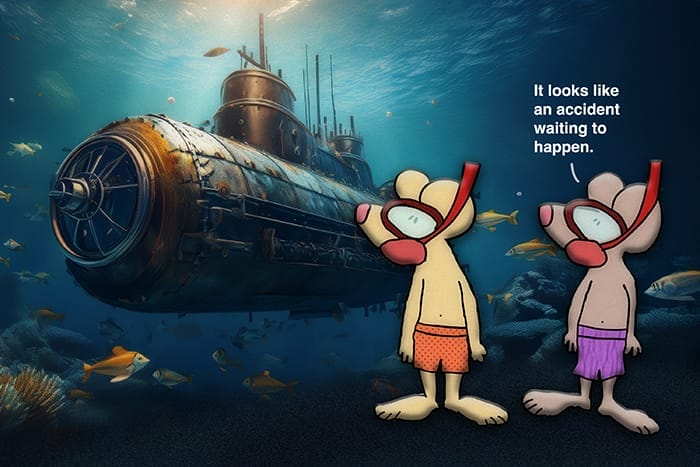The United States currently has a total of 69 nuclear-powered submarines in the Navy. But. When was the first military submarine attack?
To me, it seems like submarines are things of our present day. At least, when I think of them, I see them as recent things within the past 100 years or so.
But they go way back. In 1620 a guy named Cornelis Drebbel was credited with creating the first functional submarine. He was a Dutch inventor. His design was a wooden vessel that could hold a small crew. It was powered by oars. Drebbel’s submarine was able to travel just below the surface of the water. It had its first successful run on the River Thames in London.
But it was not until 150 years later that they were first used in naval combat.
That means we need to talk about David Bushnell. He was an American inventor, and he began building underwater mines while a student at Yale University. I guess he was bored with calculus.
Anyway, he decided that a submarine would be the best means of delivering his mines in warfare. So he decided to build one. It an eight-foot-long wooden submersible that was christened the Turtle for its shape. It was large enough to accommodate one operator. And. The submarine was entirely hand-powered.
On September 7, 1776, during the Revolutionary War, the American submersible craft Turtle attempted to attach a time bomb. It was intended for the hull of British Admiral Richard Howe’s flagship Eagle in New York Harbor.
This was the first time a submarine was used in warfare.
It didn’t go so well. Ezra Lee piloted the craft. As Lee worked to anchor a time bomb to the hull, he could see British seamen on the deck above. Remarkably, they failed to notice the strange craft below the surface.
Lee had almost secured the bomb to the ship when his boring tools failed to penetrate a layer of iron sheathing. So he gave it up and retreated. The bomb exploded nearby, causing no harm to either the Eagle or the Turtle.
It kept not going well. During the next week, the Turtle made several more attempts to sink British ships on the Hudson River. But whoops. Each time it failed. It was blamed on the operator’s lack of skill.
Only the inventor, Bushnell, was really able to competently execute the submarine’s complicated functions. But he was frail. He was unable to pilot the Turtle in any of its combat missions.
During the Battle of Fort Lee, the Turtle was lost when the American sloop transporting it was sunk by the British.
Perhaps this looks like a failure. But really, it was a step toward doing it better the next time. A step to learning anew.
“””””””
“Failure is simply the opportunity to begin again, this time more intelligently.” — Henry Ford
“””””””
“I have not failed. I’ve just found 10,000 ways that won’t work.” — Thomas Edison
“””””””
“It is hard to fail, but it is worse never to have tried to succeed.” — Theodore Roosevelt
“””””””
The first submarine of the fighting kind
